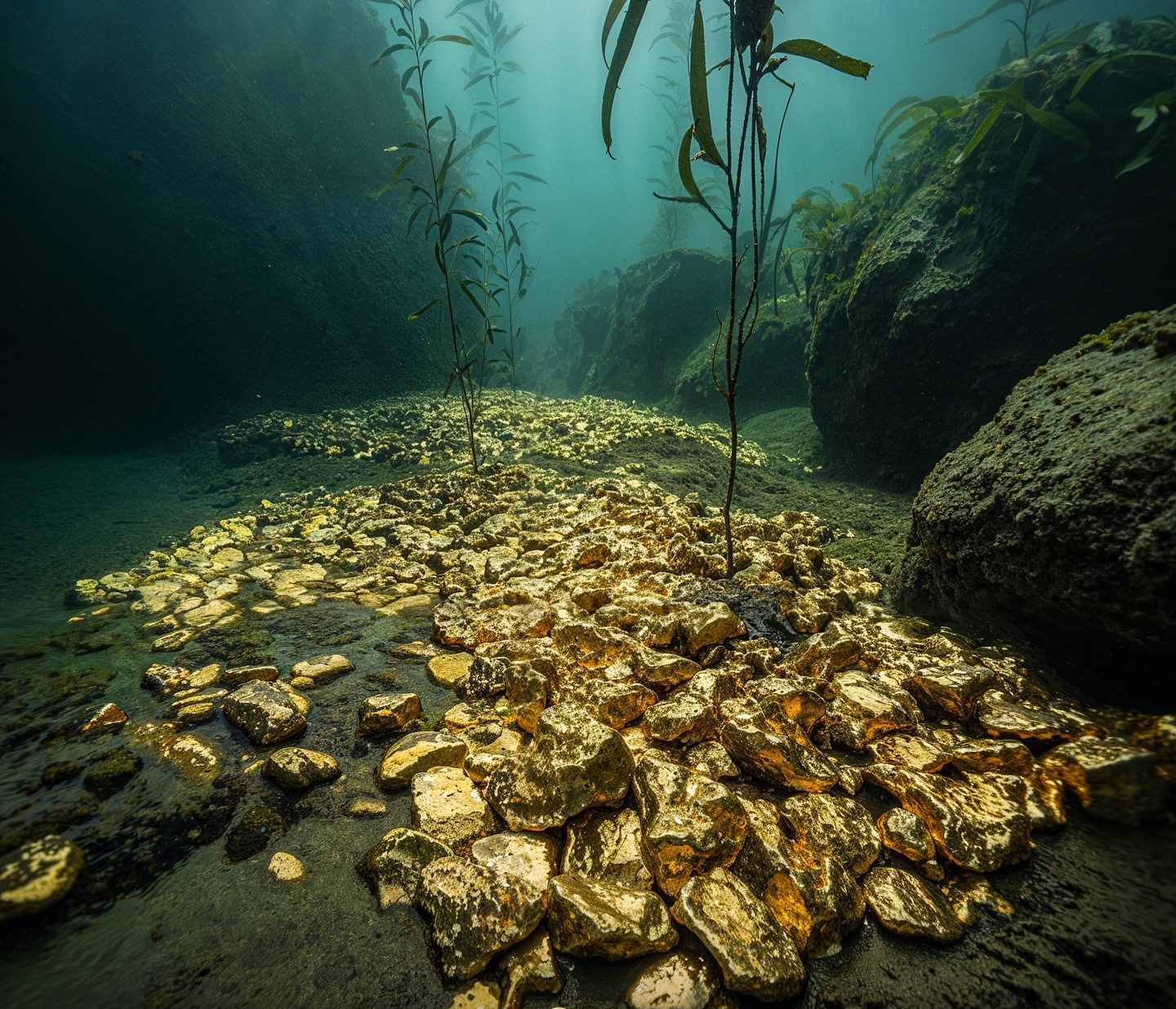There’s Over $900 Trillion of Gold Spread Throughout the Ocean — But We Can’t Touch It
If I told you there’s more gold in the ocean than has ever been mined on land, would you believe it? It sounds like a pirate’s fantasy or a forgotten myth, but it’s not. It’s science. Right now, beneath the surface of the Earth’s vast oceans, there’s gold — not in sunken treasure chests or ancient shipwrecks, but dissolved invisibly in seawater. And not just a little. By some estimates, there’s over $900 trillion worth of it. Some scientists even argue that if you count deeper sediment and long-buried deposits, the number could creep toward $2 quintillion. That’s a two followed by eighteen zeroes. Enough to make every person on Earth a multi-billionaire… in theory.
The mystery isn’t whether the gold is there. It is. The challenge is what form it takes and how spread out it is. You won’t find nuggets or even flakes floating around. This gold exists at the molecular level — microscopic traces dissolved throughout the 352 quintillion gallons of seawater covering the planet. On average, there’s only about 13 parts per trillion in each liter. That means for every 100 million metric tons of seawater, you might extract about one measly gram of gold. It’s like trying to gather individual drops of ink scattered across the entire ocean.
So why haven’t we figured out how to pull it out? Well, people have tried. From ambitious inventors in the early 20th century to modern nanotechnology labs, the dream of ocean gold has never fully died. Some early attempts even led to scams and schemes, with companies promising riches that never arrived. But even legitimate efforts quickly hit a wall: energy costs, processing limits, and the enormous volumes of water required to extract just tiny amounts of gold made the math impossible. The cost to get the gold was, and still is, far greater than the gold itself.
But we’re not entirely in the dark anymore. Today’s scientists are experimenting with advanced materials like metal-organic frameworks — basically molecular cages that can trap gold ions. They’re also testing electrochemical methods and specialized membranes that could one day make extraction more efficient. In labs, these technologies show promise. But in the real world? The ocean is messy. Salt, marine life, temperature shifts, and the sheer scale of it all make controlled conditions nearly impossible. Even when the extraction works, the process still burns through more energy and materials than the gold can repay.
Still, the idea lingers — not because of greed alone, but because of curiosity, hope, and maybe a bit of wonder. There’s something deeply human about staring at the ocean and imagining hidden wealth. It’s not unlike the way ancient explorers set out for new lands, or how miners once chased veins of silver through mountain rock. The dream isn’t always about the money. Sometimes, it’s about the adventure, the what-if, the challenge of making the impossible real.
But maybe that’s also why we haven’t cracked the code yet. Perhaps nature wants it this way — to remind us that not every treasure is meant to be taken. That some riches are there to teach us humility. Or patience. Or that sometimes, the story is more valuable than the gold itself.
So next time you stand by the sea and look out across its endless horizon, think about the silent fortune beneath. You can’t see it. You’ll probably never touch it. But it’s there — a shimmering promise hiding in every wave, waiting for a future that might just be clever enough, or bold enough, to bring it to the surface.
Until then, the ocean keeps its secret. And we keep dreaming.

